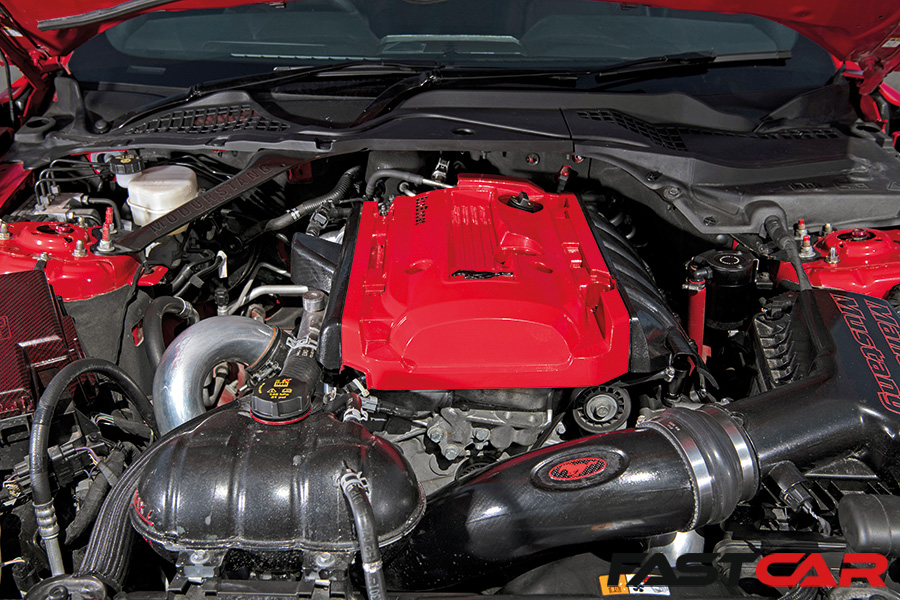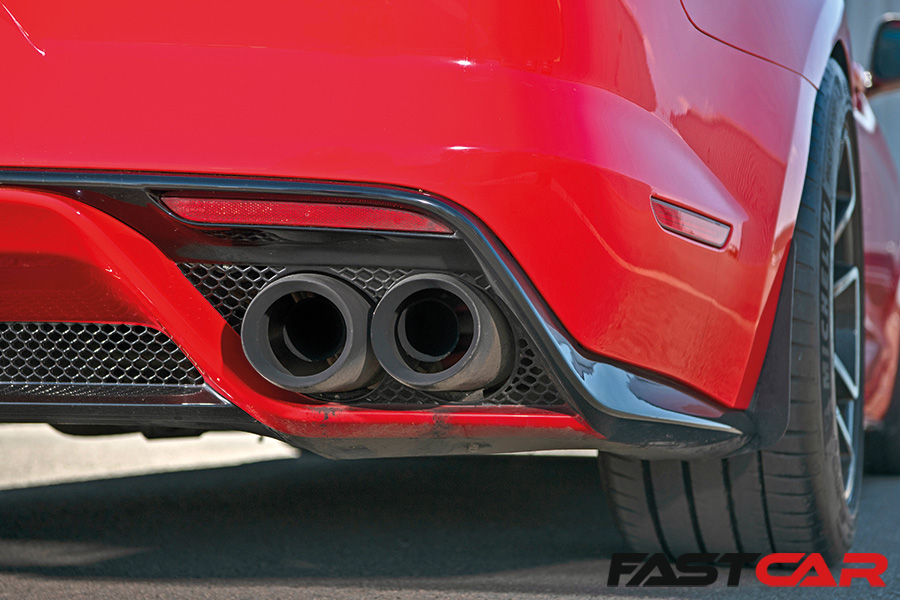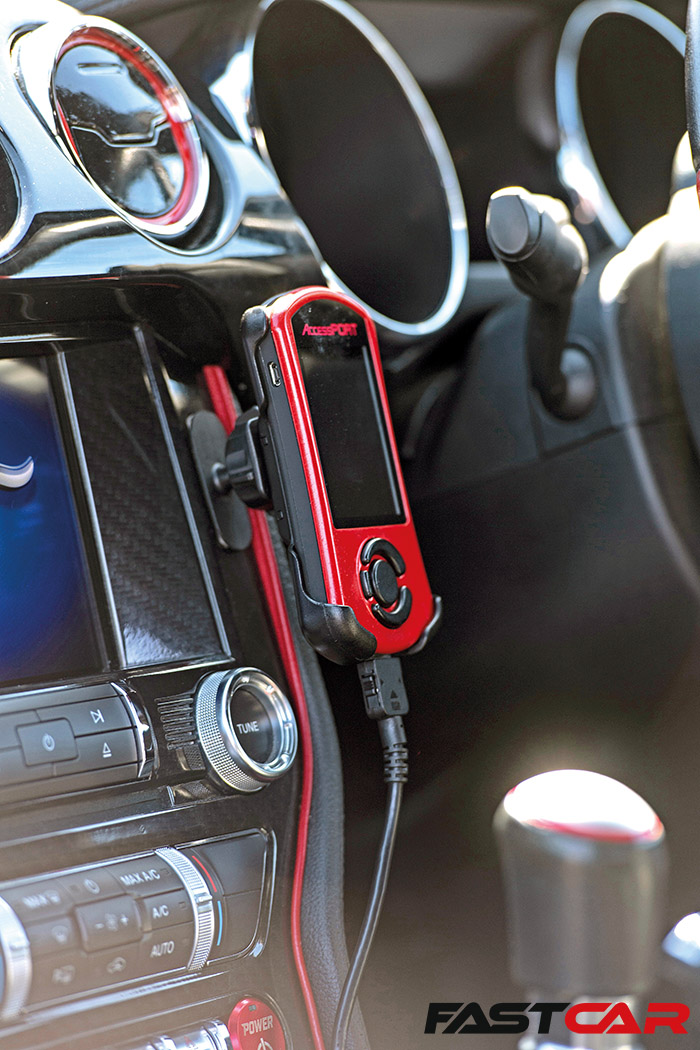Despite being down four-cylinders on the V8, the Ford Mustang EcoBoost has great tuning potential. Here’s what you need to know.
The sixth-generation Ford Mustang S550 is one of the most iconic and popular sports cars in the world. But in a world where reducing carbon emissions is a key objective for everyone, smoking around in a 5.0-liter V8 gas-guzzler can be seen as unnecessary. Plus, gas prices aren’t exactly what they were during the ‘60s!
So, Ford’s answer was to offer the same sporty chassis, sleek styling, and iconic Mustang name but with a more emissions-friendly 2.3-liter four-banger in place of the Coyote V8. But it wasn’t just a regular motor plucked from the Ford production line; the Mustang got the same EcoBoost unit as found in the formidable Focus RS.
Ok, it wasn’t exactly the same – there were a few minor spec changes from the RS motor – but the Mustang’s 2.3 kicked out a healthy 310 horsepower and more-than-useable 350lb.ft. The EcoBoost motor offers a great balance of power, efficiency, and affordability, but if you want to take your Mustang to the next level, there’s plenty of tuning options available. And, because the EcoBoost is turbocharged, there are significant gains to be found from simple tuning upgrades.
In this guide, we’ll show you some of the best mods and upgrades for your Mustang EcoBoost, from modest bolt-ons to more advanced tuning solutions.

What is Mustang EcoBoost Tuning?
Tuning your EcoBoost Mustang is simply the process of modifying and optimizing the 2.3-liter turbocharged engine to increase its horsepower, torque, and responsiveness for a more exciting and rewarding driving experience. Tuning will involve changing various parts and settings of your engine, such as the intake, exhaust, turbocharger, intercooler, fuel injectors, spark plugs, camshafts, valves, pistons and more.
Getting the most from the physical tuning parts will also involve adjusting the engine’s computer (ECU) parameters – known as remapping. This process sees a tuner adjust settings such as the air-fuel ratio, ignition timing, boost pressure and more to fully optimize the performance of your specific car considering the physical performance parts you have added. Remapping can be done in several ways – usually via a laptop or a handheld ECU flashing device – and it can make a significant difference in your engine’s performance.
Why Should You Tune Your Mustang EcoBoost?
There are many benefits of tuning the Mustang’s 2.3-liter EcoBoost motor, but the main reasons are to increase performance and power outputs. A more powerful engine means a faster car, but with modern tuning techniques it is also possible to increase power at the top end and improve fuel economy when cruising too.
But it’s not all about the horsepower figures; tuning will also really change the character of the car, altering the way it feels to drive and ultimately making every journey much more exciting. Sharper throttle response, a raspier exhaust note, and a greater sense of urgency are all common traits of a well-tuned Mustang.

How to Tune Your Mustang EcoBoost?
There are many ways to tune your Mustang EcoBoost, depending on your budget, goals, and preferences. Here are some of the most common and effective tuning methods:
Bolt-On Mods
Bolt-on mods are aftermarket parts that can be easily fitted without needing major modifications or alterations. They are usually relatively inexpensive and reversible, meaning you can go back to stock if you want to.
Some of the most popular bolt-on mods for Mustang EcoBoost include:
- Cold air intake: A cold air intake replaces your stock air filter and intake tube with a larger and smoother one that allows more cold and dense air to enter your engine. This improves your engine’s breathing and combustion efficiency, resulting in more power and throttle response.
- Cat-back exhaust: A cat-back exhaust replaces your stock exhaust system from the catalytic converter back with a larger and less restrictive system that reduces back-pressure and improves exhaust flow. This in turn improves your engine’s performance and sound, giving it a deeper and more aggressive tone.
- Downpipe: The downpipe connects your turbocharger to your exhaust system, and it’s one of the most restrictive parts of the stock setup. Replacing it with a larger and freer flowing one can reduce turbo lag and increase boost pressure, resulting in more power and torque.
- Intercooler: An intercooler cools down the hot air coming from your turbocharger before it enters your engine. This increases the air density and oxygen content, resulting in more power and efficiency. Upgrading your stock intercooler with a larger and more efficient one can prevent heat soak and improve performance in hot weather conditions or when used hard on the track or drag strip.
- Blow-off valve: A blow-off valve releases excess boost pressure from your turbocharger when you lift off the throttle. This prevents compressor surge and protects your turbo from damage. Upgrading your stock blow-off valve with a stronger and more responsive one can improve turbo spool-up and sound.

ECU Tuning
ECU tuning is the process of modifying the software that controls your engine’s computer (ECU) to optimize its performance. This can be done by using a handheld device or a laptop that plugs into your car’s OBD-II port and allows you to adjust various parameters of your engine, such as the air-fuel ratio, ignition timing, boost pressure and more.
ECU tuning can also be done by sending your ECU to a professional tuner who can customize it according to your specifications. Alternatively, you can buy a pre-tuned calibration file that is already perfect for your car and use a handheld flashing device to upload the new file to your car’s ECU.
the process can make a huge difference to your engine’s performance, as it can unlock hidden power and torque that are limited by the factory settings. It can also improve your engine’s efficiency and drivability by smoothing out the power curve and eliminating any hesitation or lag.
However, ECU tuning does have some drawbacks, such as voiding any manufacturer warranty or emissions compliance. It’s always best to check a tune is legal in your State before working on your car.
Therefore, ECU tuning should be done with caution and care, and only by reputable and experienced tuners. You should also monitor your engine’s health and performance regularly and use good quality parts and fluids (including premium-grade fuels) to prevent any issues.
Turbo Upgrade
The big one! Replacing your stock turbocharger with a larger and more powerful one that can produce more boost and increase the engine’s airflow. This can significantly increase your engine’s power and torque, as well as improve your engine’s response and spool-up. Not only that, but it’s sure to make you smile every time you pop the hood and see a huge shiny turbo glaring back at you! You’ll be the envy of all your mates at the next local car meet!
However, upgrading your turbo is a complex and expensive process that requires extensive modifications and tuning to your engine and ECU. It also puts more stress and strain on your engine components, such as the pistons, con rods, head gasket, and more. Therefore, a turbo upgrade should only be done by expert tuners who can ensure proper fitment, compatibility, and reliability.

Tuning the Mustang EcoBoost: Is It Worth the Effort?
Yes. Definitely! Mustang EcoBoost tuning is a great way to enhance your car’s performance, sound, and appearance. The Mustang is supported by a fantastic network of specialists and enthusiasts, and there are plenty of tuning options available for you to choose from.
However, before tuning you should also be aware of the risks and challenges involved in tuning your engine. For more information and advice, check out our other articles on tuning:








